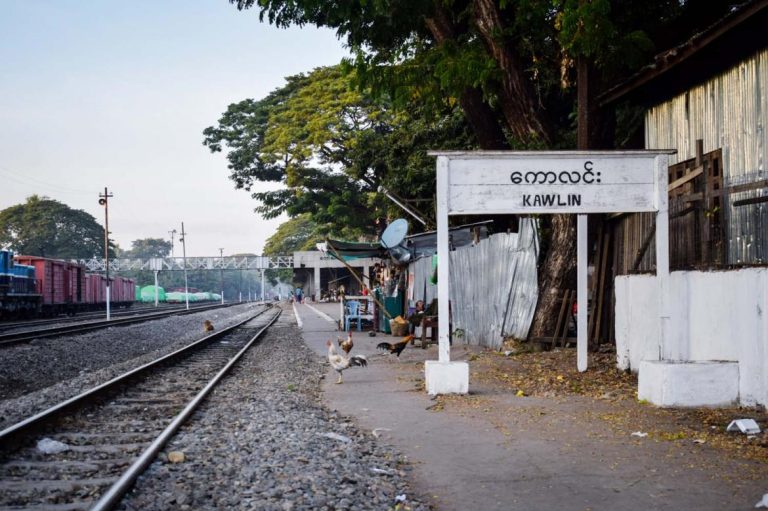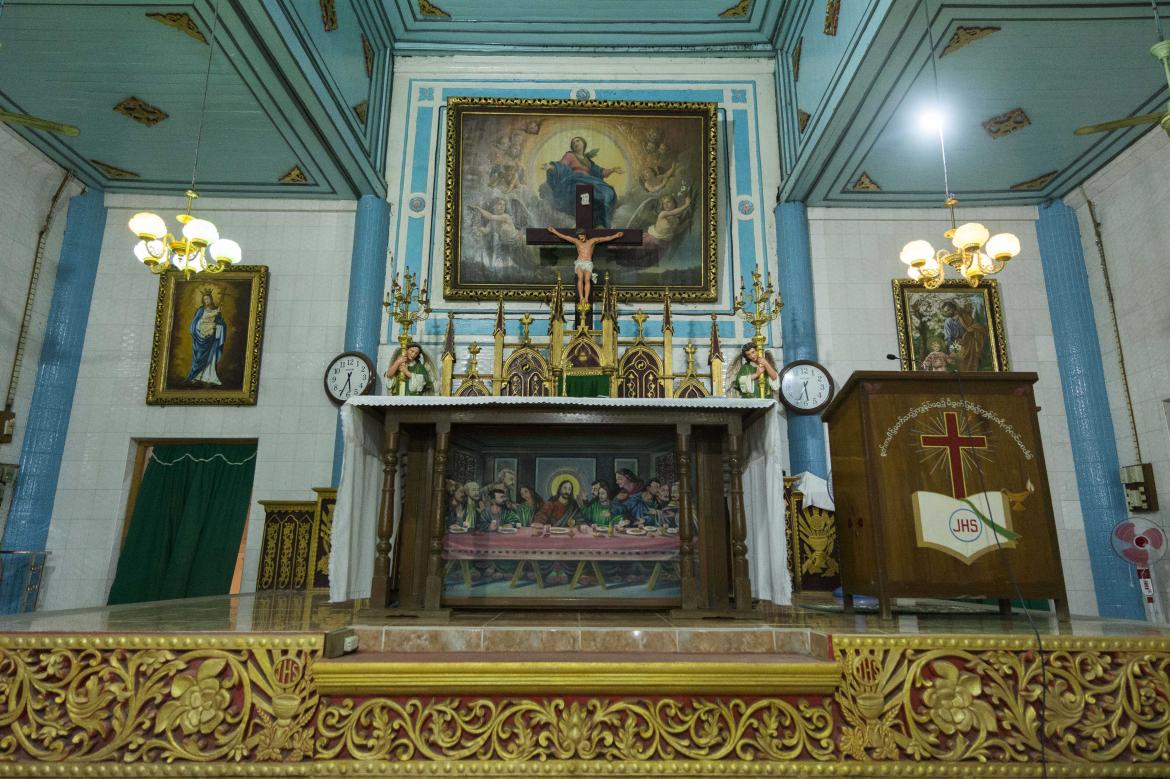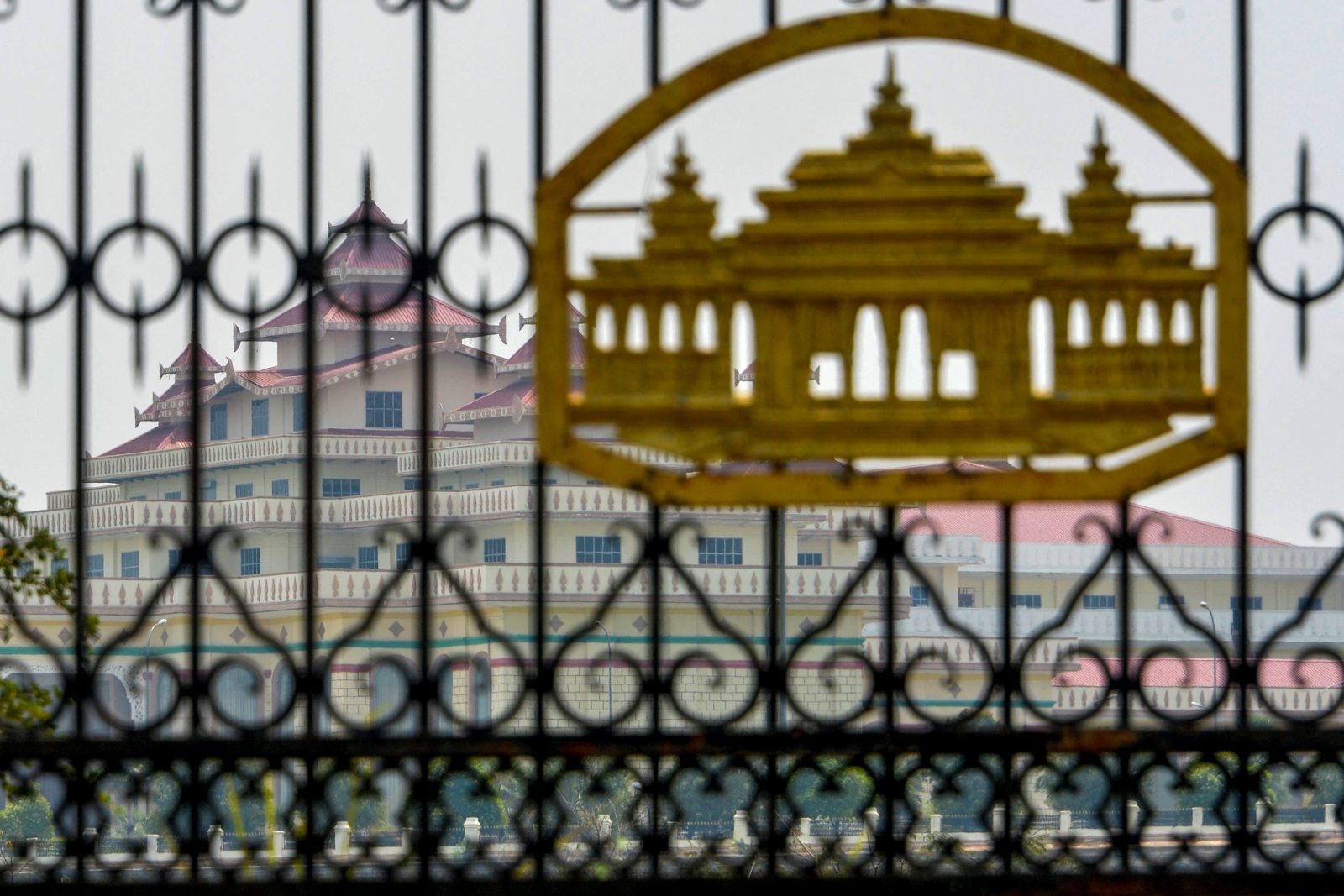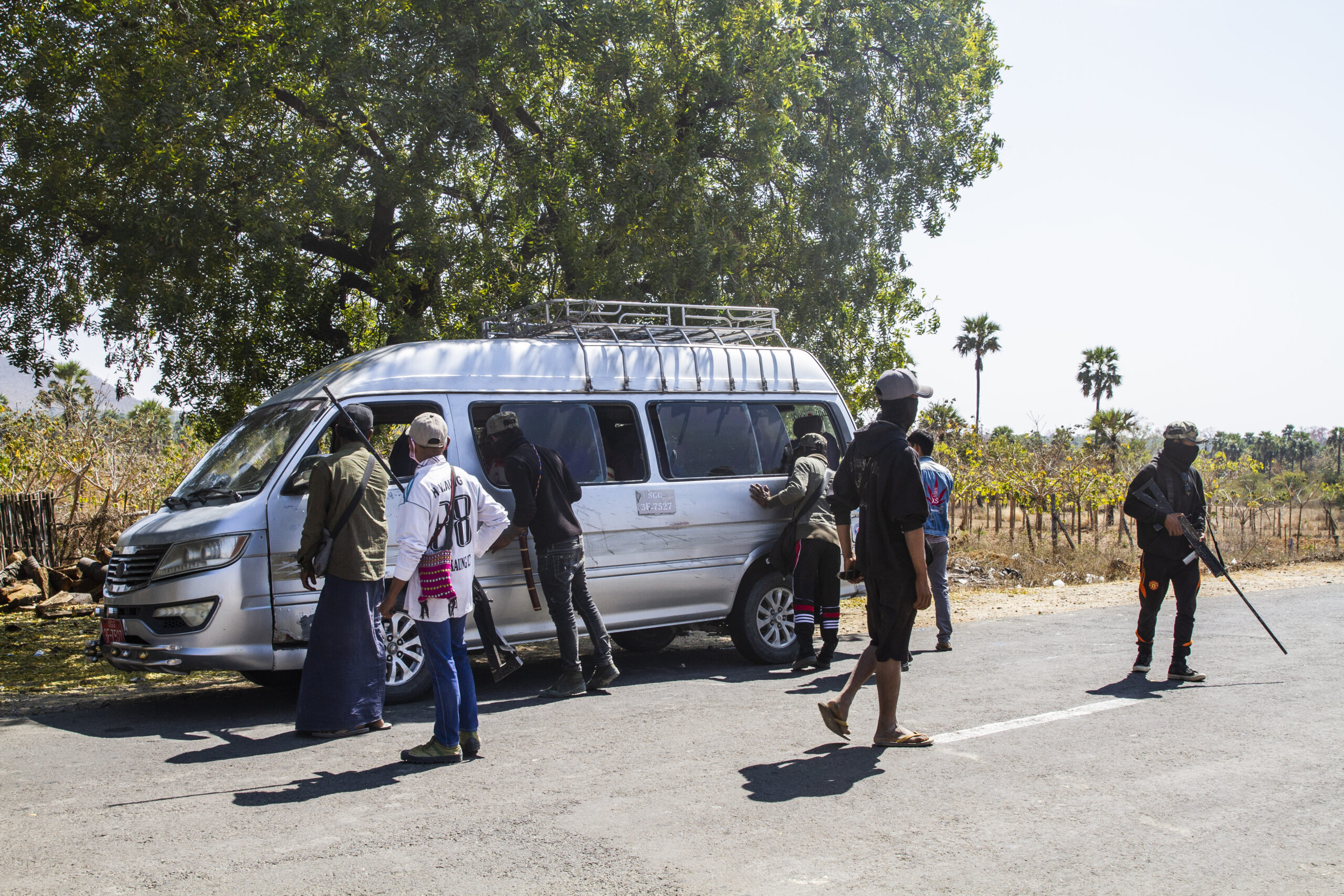Facing losses on the battlefield, the military regime is increasingly raising and arming militias known as Pyusawhti, but poor pay and steep risks are prompting some members to desert.
By YE MON | FRONTIER
Ko Phoe Too* joined a pro-junta militia in Bago Region’s Pyay Township in September at the urging of his uncle, who told him he’d legally own a gun and earn good money.
“My uncle told me that after undergoing military training, the military would provide us with weapons and money, and then [we could] protect the people targeted by the PDFs,” he told Frontier, referring to the People’s Defence Forces, armed groups created after the 2021 military coup to fight the new junta.
Aged 26 and the eldest son of four in a family of poor farmers, Phoe Too was unemployed and eager to support his relatives, making him a good target for recruitment.
He became the youngest of the roughly 30 fighters in the militia, the oldest of which was 50 years old. He was taught how to use a gun and other basic military skills, while officers from the Myanmar military, known as the Tatmadaw, told them where their priorities lay.
“Sometimes military officers came to give speeches during the training. I’d expected them to say we were there to protect the country, but instead they said it was to protect the Tatmadaw,” he said. “We must assist the military in fighting terrorism, of course, but I don’t believe PDFs are terrorist organisations. Our leader made up stories about how cruel they are, killing people at random.”
Phoe Too added that trainees were effectively given a licence to kill civilians. “The military officers who trained us said that if we kill an innocent civilian by mistake, thinking they’re a PDF member, we must blame the PDFs,” he said.
Phoe Too, who has since escaped the militia, said his was one of about 10 “Pyusawhti” groups in the township, each with between 20 and 30 members and leaders hand-picked by the military.
The Pyusawhti are a loose network of pro-junta militias named after a legendary warrior-king who, royal chronicles say, founded the first Bamar empire of Bagan in the mid-9th century. The word Pyusawhti was earlier used for a rural defence force established by U Nu’s civilian government in 1956, according to a 2016 report on militias in Myanmar by the Asia Foundation, while militias under various names have played a crucial part in counter-insurgency operations since Myanmar’s independence in 1948.
The national uprising against the 2021 coup prompted the military to raise new militias and resurrect the Pyusawhti label. These militias have been most active in the central Dry Zone regions of Sagaing and Magway, where PDFs have carved out large rural strongholds. According to a report last year by the thinktank International Crisis Group, most of them were formed spontaneously by military supporters, members of the military proxy Union Solidarity and Development Party and Buddhist nationalists who felt threatened by the PDFs.
The report claimed the military was at first reluctant to arm these new groups, fearing that weapons could fall into resistance hands. However, the regime has been increasingly recruiting, training and arming militias as an auxiliary force, including in regions such as Bago where the resistance has more recently made inroads. Phoe Too said he was recruited as part of a campaign to boost militia forces in the region in September.
Once his training was finished, Phoe Too received a rifle and a few bullets, as well as 12 kilograms of rice and one litre of oil from donors, but the pay was a fraction of what he had expected.
“To be honest, my only motivation to join was the money. My uncle had promised me I would get K100,000 per month [about US$30 at the market rate], but they only paid a monthly salary of K15,000,” he said.
He said the Pyusawhti groups in Pyay were all under-funded and lacked their own barracks and facilities. Moreover, given the lack of active combat in the township besides scattered guerrilla attacks by the resistance, the militias are largely a dormant reserve force.
“I just stayed at home. Our leader said we would be notified if there was a mission,” he explained, adding that he was never summoned during his two months in the militia.
However, he claims the group keeps a kill-list that includes local members of the National League for Democracy, anti-military activists and their family members. Although he hadn’t seen the names on the list and wasn’t aware of any killings taking place, he was sure the militia could assassinate people with impunity.
“After killing people, the authorities will protect them [the Pyusawhti members]. I didn’t murder anyone because I left the group on November 3. But if I were still a member, I’m pretty sure our leader would order me to kill someone,” Phoe Too said, explaining that he falsely told his militia leader he had to attend his grandmother’s funeral in Magway Region in order to escape.
Despite a reluctance to commit murder, poverty meant that his motives for fleeing were more financial. “I didn’t get paid enough,” he told Frontier from a location outside Pyay. “I heard Pyusawhti members in Sagaing earned more than us in Bago. I don’t know why.”
Forced recruitment
Perhaps the most infamous pro-junta militia in Sagaing is a group led by the ultra-nationalist monk U Wasawa in Kantbalu Township.
Township resident Ko Tun Min* claims he doesn’t support the junta but was forced to join the militia in August. The 27-year-old, who has since fled the group, said U Wasawa visited his village and told residents the military would seize their houses if they refused to enlist. (The name of the village has been omitted for security reasons.)

“There are many pro-military people in Sagaing, but people shouldn’t assume that all Pyusawhti members support the military. It’s very difficult to say no if they want to recruit you,” he said.
The only option to avoid recruitment was to pay K2 million every six months, but Tun Min didn’t have that money, so he was forced to start his training in early September.
However, even paying this large sum is no longer enough to avoid recruitment since the Three Brotherhood Alliance of ethnic armed groups launched Operation 1027 in northern Shan State on October 27. This operation has resulted in huge losses for the military and triggered a series of other offensives by resistance groups elsewhere in Myanmar.
On October 28, U Wasawa summoned Tun Min and the other militia members to tell them there would be imminent battles in Kantbalu. That’s when Tun Min decided it was time to escape, and he managed to do so a week later, on November 5.
“They were busy with a battle in Kawlin town and preparing to fight in Kantbalu,” he said, referring to a multi-day battle that would result in resistance forces seizing Kawlin, in the township just north of Kantbalu.
“I told my superior I needed to leave the base to buy cigarettes and never returned,” he told Frontier from a hiding place somewhere in Mandalay Region, bordering Sagaing.
Six days after he fled, on November 11, PDF fighters attacked the militia near Wat Toe village in Kantbalu, resulting in 10 Pyusawhti deaths and the seizure of 13 guns, according to independent media reports. However, U Wasawa denied this, telling pro-military outlet Myanmar National Post on November 14 that the situation in township remained “normal” and that people shouldn’t trust PDF claims of victories in the township.
But Tun Min said militia members were dying as cannon fodder for the junta, and many of them were unable to leave because they feared for themselves and their family members.
“I heard from my family that a close friend of mine was killed in Wat Toe village on November 11,” he said. “My friend said before I left the Pyusawhti base that he wanted to go with me, but his two-year-old child and wife were still in his village. He was worried about their safety.”
*indicates the use of a pseudonym for security reasons







